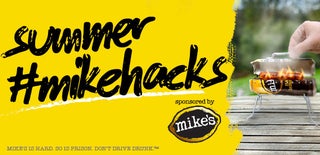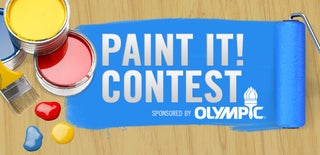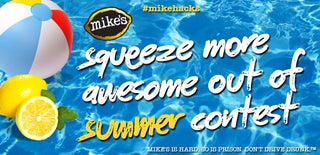Introduction: Glowing Edible Paint
What’s better than paint that’s edible? Glowing edible paint! Because we all know food, paint, and pretty much everything, is a lot more fun when it’s glowing. This is a great way to encourage kids to eat their fresh fruits and vegetables! So if you want to make some glowing edible paint and have fun decorating fruits, veggies, cookies, snacks, and more, then this Instructables project is for you!
How does it work? The key ingredient is tonic water. Tonic water has a chemical called quinine in it, and quinine fluoresces (i.e., glows) when it’s put under an ultraviolet black light. Specifically, it glows a brilliant blue (nearly white). This Instructables project uses an edible paint recipe and substitutes tonic water for regular water to make the paint glow! (I’ve never seen anybody try this before and had to give it a shot – glad to find it worked so I could share my findings!)
Warning: Ultraviolet black lights can damage eyes and skin! Be sure not to look at the light when it’s on or shine it on your skin.
Step 1: What You'll Need
Here’s what you’ll need to make these glowing snacks:
- Flour
- Sugar
- Tonic water
- Medium-sized saucepan
- Measuring cups
- Measuring tablespoon
- Food colors. I used the standard red, blue, green, and yellow. This is to make your different-colored paints.
- Ultraviolet black light
- Whisk or fork
- Small paint brush or other painting/decorating utensil
- A cup for each color paint. I used five.
- You’ll also need some food to decorate! I tried various fruits and some small cookies. The larger and flatter the surface, the easier it is to make designs people can recognize. Also, white things are often autofluorescent (you can see some of the cookies were), so check them under the blacklight first to make sure you won’t get unwanted background glowing!
Step 2: Mixing the Ingredients
In the medium-sized saucepan, mix together 2 tablespoons sugar and 1/3 cup flour. Then slowly add 2 cups tonic water – there will be a bit of bubbling because the tonic water is carbonated. Mix the ingredients together.
Step 3: Heating the Ingredients
On the stove, heat the saucepan (with the sugar, flour, and tonic water) on medium heat — make sure it does not boil! Stir almost continually until the mixture thickens. For me, it took about 15 minutes before I noticed it had thickened, but it was probably ready before this (maybe after about 12 minutes). To test if it’s thickened, lift some out on the whisk or spoon and slowly pour it back into the saucepan, watching its consistency carefully. When it’s thickened, it will also have almost no bubbles left and be yellowish.
Step 4: Coloring the Paint
When the edible paint is done, let it cool a little and then divided up into cups equal to the number of different paint colors you want to make. For me, I decided to try five colors: plain (whitish/slightly yellow), yellow, green, red, and blue. Since I prepared 2 cups of edible paint, dividing this up for five colors amounted to 0.4 cups of edible paint per cup/color. This seemed like a good amount.
To make the yellow, green, red, and blue paint colors, I added 3 drops of the appropriate food coloring to each paint cup and then mixed it in. The colors were brilliant and beautiful!
Step 5: Testing the Glowing Paint
Try putting the paint cups under the ultraviolet black light to see how the glowing colors look. Each paint color glows a color that is similar to what you see without the blacklight – for example, the red turns into a glowing red color. The brightest was the paint without food coloring added, but they all clearly glowed, some more than others.
Step 6: Paint Some Food: Fruits!
Have some fun decorating some fruits with your glowing, edible paint! You can see in the pictures here that I had fun writing words, making drawings, or arranging the food into a face. Again, the white paint is the brightest one, but the red paint also makes a beautiful red color. This can also be great for leaving secret messages that can only be revealed with the blacklight! (And, as you can imagine, there's a lot of potential here for spooky Halloween treats!)
Step 7: Paint Some Food: Cookies!
You could also try decorating some cookies with the glowing, edible paint. The main issue here is making sure the cookies don’t glow (if you care about that). You can see from the pictures here that some of the cookies did glow, but the glowing designs still looked neat, I think.

Participated in the
Teach It! Contest Sponsored by Dremel

Participated in the
Summer #mikehacks Contest

Participated in the
Paint It! Sponsored by Olympic Paint

Participated in the
squeeze more awesome out of summer contest













